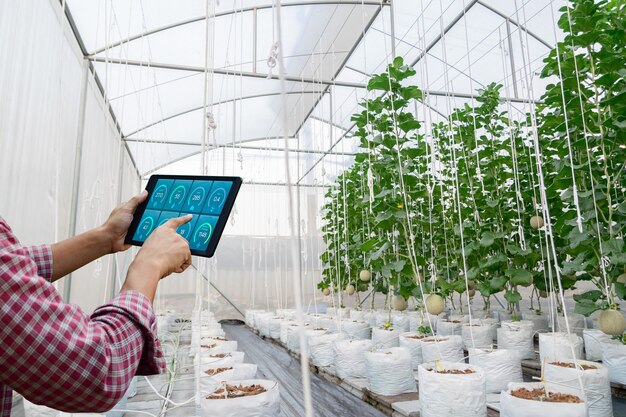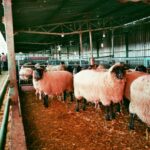The adoption of smart farming technologies is revolutionizing agriculture across South Africa, enabling farmers to increase productivity, reduce costs, and enhance sustainability. However, the transition to these advanced technologies often comes with challenges. Many farmers make mistakes that can hinder the full benefits of smart farming solutions. Below are 10 common mistakes South African farmers make when adopting smart farming technologies and how to avoid them.
1. Not Understanding the Farm’s Specific Needs
One of the most common mistakes is investing in smart farming technologies without fully assessing the farm’s unique requirements. Technology such as drones, sensors, and software should address specific challenges like irrigation management, pest control, or yield monitoring. Farmers must identify their pain points and research technologies that align with their goals, ensuring better returns on investment (ROI).
2. Choosing Technology Without Proper Research
The agricultural technology market offers a wide range of tools, from automated irrigation systems to precision planting equipment. However, many farmers rush into buying the latest technologies without evaluating their suitability, cost, and long-term benefits. Thorough research, including comparing different products, consulting experts, and reviewing case studies, is crucial for making informed decisions.
3. Neglecting Training and Education
Smart farming tools often come with sophisticated systems that require technical knowledge to operate effectively. Farmers who fail to invest in training for themselves and their workers risk underutilizing the technology. Proper training programs and workshops will ensure that everyone understands how to use the equipment, interpret data, and maximize its potential.
4. Overlooking Data Management and Analysis
Most smart farming technologies generate large amounts of data related to soil health, crop growth, water usage, and weather conditions. A common mistake farmers make is collecting this data but failing to analyze and use it for decision-making. Investing in user-friendly data management platforms or partnering with data analysts can help turn raw information into actionable insights for better farm management.
5. Underestimating Connectivity Requirements
Smart farming solutions often rely on internet connectivity to collect and transmit real-time data. Many rural areas in South Africa still face limited access to reliable internet infrastructure, which can hinder the effectiveness of certain technologies. Farmers should assess connectivity requirements before adoption and explore alternative solutions like offline-compatible tools or low-bandwidth systems.
6. Ignoring Compatibility Between Systems
When integrating different smart farming tools, compatibility issues can arise. For example, a precision tractor system might not work seamlessly with soil sensors or farm management software. Farmers often overlook the importance of ensuring that all technologies are compatible with each other, leading to inefficiencies. Choosing interoperable systems or working with a single provider can prevent this challenge.
7. Focusing on Technology Instead of Outcomes
Many farmers adopt smart farming technologies because they are trendy, without considering their practical value. Technology should not be implemented for the sake of innovation alone; it must deliver tangible benefits like improved yields, reduced input costs, or better resource management. Farmers must evaluate the performance of their technologies to ensure they achieve measurable results.
8. Failing to Budget for Ongoing Costs
Smart farming technologies often involve additional expenses beyond the initial purchase. Farmers may overlook costs such as software subscriptions, equipment maintenance, spare parts, and upgrades. These ongoing costs can add up over time. To avoid financial strain, farmers should develop a realistic budget that includes all expenses associated with adopting and running smart technologies.
9. Not Considering Scalability
Some farmers invest in technologies that meet their current needs but fail to consider future scalability. For example, a small sensor network might work well for a few hectares but may not support a growing farm. When selecting technologies, farmers should choose scalable solutions that can expand alongside their farm operations. This ensures long-term value and adaptability.
10. Overlooking Technical Support and After-Sales Service
A lack of technical support is another challenge many farmers face when adopting smart farming technologies. Machines or software can break down, require updates, or face operational challenges. Farmers often forget to evaluate whether the supplier offers reliable technical support and after-sales service. Partnering with reputable providers who offer ongoing assistance will ensure smooth operations and minimize downtime.
Adopting smart farming technologies offers immense opportunities for South African farmers to improve productivity, conserve resources, and address modern agricultural challenges. However, to avoid common pitfalls, farmers must conduct thorough research, invest in training, focus on data utilization, and choose scalable, compatible systems. By addressing these challenges, farmers can unlock the full potential of smart farming and position themselves for long-term success in an evolving agricultural landscape.
Join 'Farmers Mag' WhatsApp Channel
Get the latest Farming news and tips delivered straight to your WhatsApp
CLICK HERE TO JOIN






